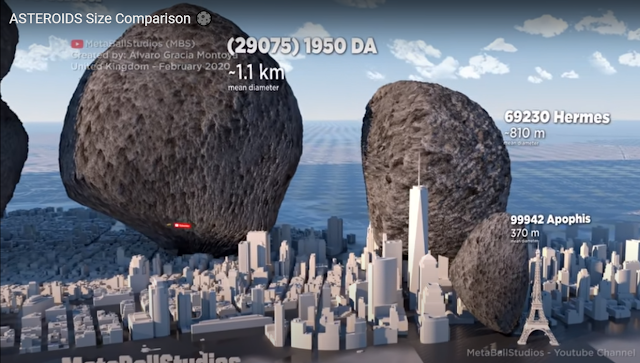Comet 46P/Wirtanen next perihelion 2024-May-19
Comet 46P/Wirtanen is a
The Comet 46P/Wirtanen nucleus is approximately 1.2 kilometers diameter (example distance & size shown above) and is composed of loose collections of ice, dust, and small rocky particles. Although actual sizes are yet to be determined, the coma may be up to 15 times the Earth's diameter, while the tail may stretch one astronomical unit. Expected to be sufficiently bright, Comet 46P Wirtanen may be seen from the Earth without the aid of a telescope and may subtend an arc of 30° (60 Moons) across the sky. Comets have been observed and recorded since ancient times by many cultures.
The perihelion is the point in the orbit of a planet, asteroid or comet that is nearest to the sun. It is the opposite of aphelion, which is the point farthest from the sun. The perigee is the point in the orbit that is nearest to the Earth, opposite of apogee.
Comet 46P/Wirtanen is a short period comet with a current orbital period of 1,982 days (5.4 years)
These are the approximate dates of Comet 46P/Wirtanen perihelion since it's discovery:
- Dec 12, 2018
- Jul 9, 2013
- Feb 4, 2008
- Sep 1, 2002
- Mar 29, 1997
- Oct 25, 1991
- May 22, 1986
- Dec. 17, 1980
- Jul 15, 1975
- Feb 9, 1970
- Sep 6, 1964
- Apr 4, 1959
- Oct 30, 1953
- Apr 30, 1948
This year the perigee of Comet 46P/Wirtanen occurs Dec 16, 2018 less than 4 days after perihelion. This is when the comet is near its brightest. At its closest, the distance from Earth to Comet 46P/Wirtanen will be:
- 0.0781 AU (1 Astronomical Unit = roughly the distance from the Earth to the sun.)
- 30 Lunar distances
- 11.5 million km
- 7.1 million miles






Estou curtindo a passagem do cometa wirtanem na regão norte do Brasil, estou acompanhando e registrando tudo no stellarium com direito a fotos e registros para o meu google photos rsrsrsr
ReplyDelete